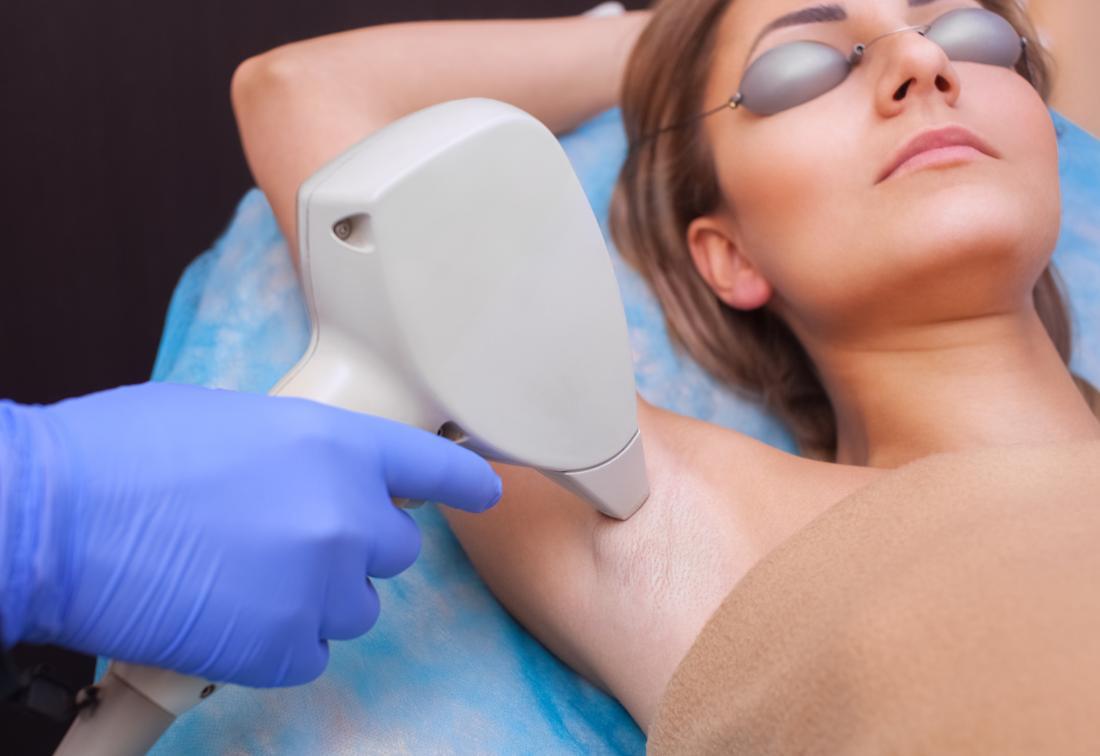In the world of personal care, the quest for smooth, hair-free skin can be a deeply intimate journey, one that transcends mere aesthetics and delves into the realm of personal affirmation. For many trans women, this pursuit carries profound significance, interweaving identity and self-expression with the tactile sensation of silkiness. ”Mastering Smoothness: Hair Removal Tips for Trans Women” is a guide that celebrates this intricate dance between beauty and authenticity. Whether you’re just beginning to explore hair removal or fine-tuning your routine, this article will provide you with the insights and tips to achieve the smooth, glowing skin that feels as true to you as the woman you see in the mirror. Join us as we navigate the landscape of hair removal with sensitivity, precision, and a nod to the unique experiences of trans women.
Choosing the Right Hair Removal Method for You
Finding the ideal hair removal method can be a personal journey, especially for trans women who seek both efficacy and comfort. There are various techniques available, each with its own set of advantages and drawbacks. To help you navigate these options, consider the following key points that can influence your decision.
**Shaving** is one of the most accessible and painless methods, making it a favorite for quick results. However, the downside is that it requires frequent maintenance, sometimes leading to *irritation and ingrown hairs*. If you opt for shaving, using a shave gel or cream designed specifically for sensitive skin can mitigate these issues.
For longer-lasting smoothness, **waxing** could be your go-to method. It effectively removes hair from the root, delivering up to four weeks of hair-free bliss. While waxing can be painful, the results often speak for themselves. Additionally, regular waxing can lead to finer, less noticeable hair regrowth over time, and for many, the initial discomfort becomes more tolerable after multiple sessions.
**Laser hair removal** offers a more permanent solution, especially beneficial for those looking for a long-term answer. The process involves a series of sessions that specifically target hair follicles. Initially, it may seem costly, but when considered as a lasting investment, it could ultimately save time and money. Still, it’s essential to consult with a professional to evaluate your *skin type and hair color* compatibility since laser treatments work best on darker hair and lighter skin tones.
| Method | Pros | Cons |
|---|---|---|
| Shaving | Quick, Painless, Inexpensive | Frequent maintenance, Irritation |
| Waxing | Long-lasting, Hair re-growth less noticeable | Painful, Possible allergic reactions |
| Laser Hair Removal | Permanent, Time-saving | Costly, Requires multiple sessions |

Prepping Your Skin: Essential Steps for a Smooth Experience
Creating an optimal canvas for hair removal is crucial, ensuring a smoother and more comfortable experience. To start, it’s essential to **cleanse your skin** thoroughly. This step helps remove dirt, oil, and dead skin cells that can clog pores and cause irritation. Use a gentle, pH-balanced cleanser to avoid over-drying your skin. Clean skin also allows for better adherence of waxing strips or more effective penetration for depilatory creams.
Next, **exfoliating** your skin is a must. Exfoliation sloughs away dead skin cells and can help prevent ingrown hairs, which are a common concern. For a gentle yet effective exfoliation, consider using a sugar scrub or a soft brush. Aim to exfoliate a day or two before your hair removal session rather than immediately before to avoid over-sensitizing your skin.
**Moisturizing** plays a key role in prepping your skin, especially for those with dry or sensitive skin types. Hydrated skin is more pliable and can help reduce the chance of nicks or cuts when shaving. Opt for a light, non-greasy moisturizer that gets absorbed quickly without leaving any residue. This step ensures that your skin remains supple and resilient before the hair removal process.
| Step | Recommended Products |
|---|---|
| Cleanse | pH-Balanced Cleanser |
| Exfoliate | Sugar Scrub |
| Moisturize | Light, Non-Greasy Moisturizer |
Lastly, consider **patch testing** any new products before applying them extensively. This is particularly important for those with sensitive skin or who are trying a new hair removal method for the first time. Apply a small amount of product to a discreet area and wait 24 hours to check for any adverse reactions. This proactive step can save you from discomfort or allergic reactions, making your journey to smoothness as pleasant as possible.

Professional vs. DIY: The Pros and Cons of Each Approach
Seeking professional hair removal services can provide a range of advantages, especially for trans women aiming for a smoother, long-lasting result. **Professional treatments** such as laser hair removal and electrolysis are highly effective, reducing hair growth significantly after a few sessions. Not only do you benefit from the expertise of trained technicians, but the use of advanced, specialized equipment also ensures precision and safety. However, these treatments can be costly and time-consuming, requiring multiple visits and potentially putting a strain on your budget and schedule.
On the flip side, **DIY hair removal** methods, such as shaving, waxing, and using depilatory creams, offer convenience and privacy. You can perform these procedures at home, avoiding the need for appointments and the sometimes uncomfortable experience of exposing intimate areas to strangers. Additionally, the cost is significantly lower, making DIY a budget-friendly option for many. Yet, the drawbacks include the risk of skin irritation, potential injury from incorrect technique, and the necessity for frequent maintenance, as these methods typically offer shorter-term results.
Here’s a comparison to help illustrate the key points:
| Aspect | Professional | DIY |
|---|---|---|
| Cost | High | Low |
| Effectiveness | High | Moderate |
| Convenience | Low | High |
| Maintenance | Low | High |
Ultimately, the choice between professional and DIY hair removal comes down to personal preference, budget, and lifestyle. For those who value long-lasting smoothness and are prepared to invest in it, professional services may be the way to go. If flexibility, low cost, and the ability to perform treatments at home are more appealing, DIY methods can be a suitable alternative. Assess your priorities and choose the path that aligns best with your hair removal goals.

Aftercare Essentials: Keeping Your Skin Hydrated and Healthy
Achieving that silky-smooth skin is a journey that extends beyond the actual hair removal process. Keeping your skin well-hydrated and healthy is crucial to maintain the finesse you’ve worked for. Post hair removal, it’s normal for your skin to feel a bit sensitive, so treating it with extra care is paramount. Start by incorporating products with **hydrating ingredients** like hyaluronic acid, glycerin, and aloe vera into your routine. These components help replenish moisture and soothe any irritation.
Avoiding potential irritants is equally important. Post-removal, steer clear of **fragrant lotions, alcohol-based products,** and exfoliants for at least 48 hours. Switch to gentle, fragrance-free options to ensure your skin doesn’t face any unnecessary hurdles. This break allows your skin to recover naturally and reduces the chance of redness or bumps.
Hydration isn’t solely about what you apply topically. Drinking plenty of water throughout the day keeps your skin moist and elastic from the inside out. Aiming for at least **eight glasses** a day can make a world of difference. Complement this with a balanced diet rich in vitamins A, C, and E, which are known for their skin-nourishing benefits.
Your post-care ritual can include soothing treatments like **cool compresses** or **oatmeal baths** to calm any discomfort. Using a humidifier in your room can also help maintain an optimal moisture level, preventing your skin from drying out. If you experience persistent irritation, over-the-counter hydrocortisone cream can offer relief, but consult a dermatologist if symptoms persist.

Expert Tips for Minimizing Discomfort and Maximizing Results
When it comes to hair removal techniques, choosing the right method and preparation can significantly minimize discomfort and maximize results. The first step is to exfoliate your skin before hair removal. This helps remove dead skin cells, reduces the risk of ingrown hairs, and makes the hair easier to remove. Using a gentle scrub or a loofah, focus on areas you plan to treat. Don’t skip this crucial step if you’re aiming for smooth and clear skin.
Developing a pre-removal routine tailored to your needs can create a more pleasant experience. Consider using a topical anesthetic to numb the area. Products containing lidocaine can be very effective. Apply it as per the instructions, typically around 20-30 minutes prior to hair removal. Not only will this reduce the sensation of pain, but it will also allow you to focus on your technique, ensuring better results.
| Method | Prep Time | Pain Level |
| Waxing | 10-15 minutes | Medium-High |
| Shaving | 5-10 minutes | Low |
| Laser | Depends on salon | Medium |
| Electrolysis | Depends on session length | High |
During the hair removal process, ensure you’re in a comfortable position and well-prepared. For methods like waxing or epilating, it might help to take a deep breath before each pull. If you’re shaving, make sure to use a fresh razor and shave in the direction of hair growth to avoid irritation. If opting for an epilator, hold the skin taut and move the device slowly. This precision-focused approach can make a world of difference.
- Stay Hydrated: Drinking water beforehand can help your skin endure the process better.
- Moisturize: Post-hair removal, apply a soothing lotion or aloe vera gel to calm any redness or irritation.
- Cold Compress: For extra comfort, especially after waxing or epilating, use a cold compress to numb and soothe the skin.
Q&A
Q: What are the most common methods of hair removal for trans women?
A: The most common methods include shaving, waxing, laser hair removal, and electrolysis. Each has its own set of advantages and considerations. Shaving is quick and straightforward but may lead to razor burns or stubble. Waxing offers longer-lasting smoothness but can be painful. Laser hair removal provides more permanent results but requires multiple sessions and can be costly. Conversely, electrolysis offers permanent hair removal but tends to be a time-consuming process.
Q: How can one minimize irritation and ingrown hairs when shaving?
A: To minimize irritation, start by exfoliating to remove dead skin cells and soften the hair. Use a shaving cream or gel that suits your skin type, and opt for a sharp razor with multiple blades. Shave in the direction of hair growth to avoid irritation and ingrown hairs. After shaving, apply a moisturizing lotion or an aloe vera gel to soothe the skin. Additionally, using products specifically designed to prevent ingrown hairs can be highly beneficial.
Q: What should one consider before opting for laser hair removal?
A: Before committing to laser hair removal, consider factors such as skin tone and hair color, as the treatment works best on people with lighter skin and darker hair due to the contrast. Research different clinics to find a reputable provider and read reviews from previous clients. It’s also important to discuss any medications or skin conditions with the specialist, as these can affect treatment outcomes. Be prepared for multiple sessions and maintain realistic expectations regarding results.
Q: Is waxing a good option for facial hair removal?
A: Waxing can be effective for facial hair removal but is generally not recommended for those with sensitive skin or issues with acne, as it may exacerbate these conditions. For those who choose this method, it’s best to have it done by a professional to ensure proper technique and minimize skin irritation. Regular exfoliation and moisturizing are key to maintaining smooth skin post-waxing.
Q: What is the role of electrolysis in hair removal for trans women?
A: Electrolysis is often considered the gold standard for permanent hair removal. It involves inserting a fine probe into the hair follicle and applying an electric current to destroy the follicle’s ability to regrow hair. This method is particularly beneficial for those with lighter or finer hair that may not respond well to laser treatment. However, it requires patience and time since each hair follicle needs to be treated individually.
Q: How can one manage pain and discomfort associated with hair removal?
A: Pain management is essential for a positive hair removal experience. Over-the-counter pain relievers can be taken before appointments to reduce discomfort. Topical anesthetics are available for use prior to waxing, laser, or electrolysis sessions. Ensuring proper aftercare, such as applying cooling gels or anti-inflammatory creams, can also help ease any post-procedure discomfort. Additionally, some find that regular treatments reduce pain over time as the hair becomes finer and less dense.
Q: Are there any tips for hair removal in sensitive areas?
A: For sensitive areas like the bikini line or underarms, consider methods that provide longer-lasting results, such as waxing or laser hair removal, to reduce the frequency of hair removal sessions. Before waxing, trim the hair to about a quarter-inch in length to make the process less painful. If shaving, use a sharp razor and a gentle, unscented shaving cream to limit irritation. Always moisturize thoroughly afterward, and avoid tight clothing that may rub and irritate the skin.
By exploring these different hair removal methods and tips, trans women can find the best approach tailored to their unique needs and preferences, ultimately achieving smooth, silky skin with confidence.
Insights and Conclusions
As the journey towards self-expression and authenticity unfolds, every detail, every ritual, carries a significance that transcends the mundane. “Mastering Smoothness: Hair Removal Tips for Trans Women” serves not just as a guide, but as a companion in your path to embracing and celebrating your true self. With a blend of expert advice and personal care, these insights are here to support you in moments of transformation and self-discovery.
Remember, each stroke, each step, is more than a mere act; it is a chapter in your unique story. Whether you are already a practiced hand or just setting out on this part of your journey, know that the quest for smoothness is just one of many ways to honor the person you are becoming. As you continue to navigate this beautiful, complex dance of self-love and identity, may you find joy not just in the destination, but in every moment of the voyage.






